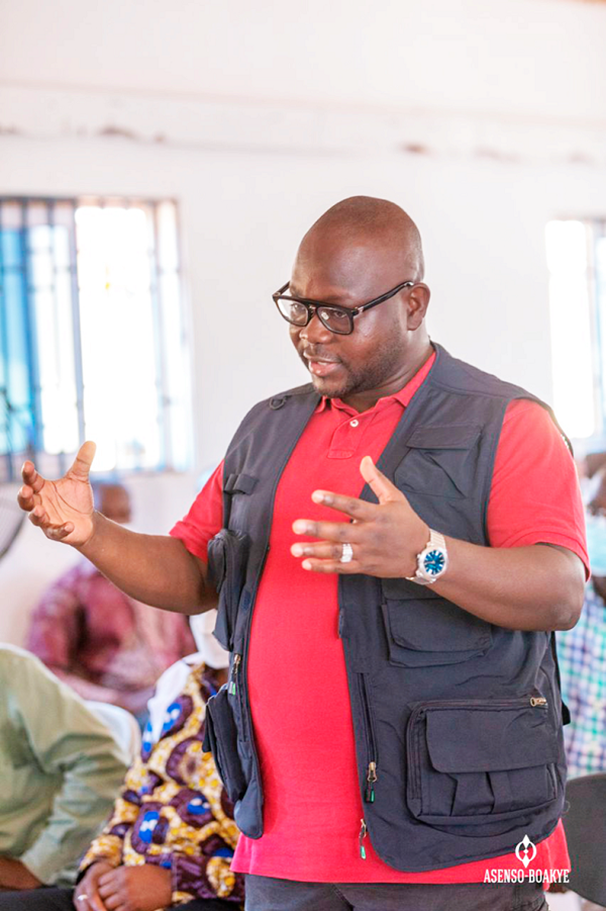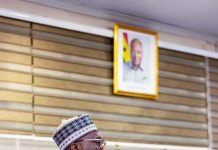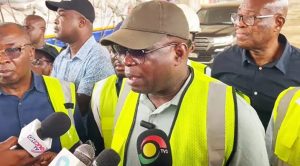
In Parliament, on Wednesday, July 30, 2025 the former Minister for Roads and Highways, Francis Asenso-Boakye, clashed with Kwame Governs Agbodza, the current Minister for Roads and Highways, over government’s “Big Push” infrastructure programme.
This flagship Programme, announced by President John Mahama in the 2025 Budget earmarks a total of GH¢13.8 billion from oil revenues and mineral royalties for massive road infrastructure development across Ghana over the next two years.
However, its rollout has sparked serious political disagreement, especially between the Minority and the Majority sides in Parliament.
Addressing the house, Francis Asenso-Boakye, also the Member of Parliament for Bantama, lambasted the Big Push Programme as politically motivated, lacking in both strategic balance and economic logic.
“Mr Speaker, this so-called Big Push is neither balanced nor vague nor strategic. It’s clearly a political programme and not an economically efficient one,” Asenso-Boakye declared.
He argued that the list of road projects under the Big Push deliberately excluded Greater Accra and Ashanti regions, which are Ghana’s two most urbanised and densely populated regions. Combined, the two regions account for over 35% of the country’s population and are, in his words, “the economic heartbeat of our country.”
“If you are embarking on a road programme to promote economic development and you conspicuously eliminate these particular regions, how are you going to explain this to Ghanaians?” he queried.
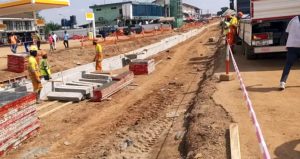
Francis Asenso-Boakye stressed that economic development hinges on targeting densely populated areas and economic centres where roads can catalyse growth. He described the current project prioritisation under Big Push as a missed opportunity.
“When resources are scarce, you prioritise. That’s basic economic theory. You build roads where they can drive economic growth, not where they just serve political interests,” he said.
In response, Minister for Roads and Highways, Kwame Governs Agbodza, did not hold back. He defended the Big Push Programme as the most inclusive and equitable infrastructure policy Ghana has seen in recent years.
“Mr. Speaker, every single region in our country is touched by the proposed Big Push projects, unlike a few years ago when the then Finance Minister stood here and completely ignored the Volta Region,” Mr Governs Agbodza said.
He challenged Francis Asenso-Boakye’s assertion that Greater Accra and Ashanti regions were neglected, noting that several key projects in those regions such as the Ofankor Road and Suame Interchange had been absorbed into the Big Push initiative, due to poor funding and mismanagement under the previous NPP government.
“You left office and contractors had raised certificates of $77 million, which you didn’t pay. People are now demonstrating. Just this week, we paid over $300 million to the contractor for the Ofankor project,” Governs Agbodza revealed.
He stressed that President Mahama had directed that no project, regardless of its origin, should be abandoned. This, he said, justified incorporating uncompleted NPP-era projects into the Big Push.
Suame Interchange and the AfriExim Loan Controversy
One of the most heated points of contention was the financing of the Suame Interchange and Ofankor Road. Kwame Governs Agbodza accused the NPP government of diverting a $750 million loan approved for other projects to fund these without completing them.
“This House approved a loan of $750 million from AfriExim Bank for the Chairman for Bridge. You diverted that to Kumasi for the Suame Interchange. The loan agreement for Suame had already fallen off!” he exclaimed.
He added that Finance Minister, Dr. Ato Forson, had correctly stated that these projects were partly financed by loans, a claim Francis Asenso-Boakye had attempted to refute.
Road Lengths
The roads minister called out former President Akufo-Addo’s claim of constructing 10,800 kilometers of new roads, calling it untrue.
“He stood right here and said they had built 10,800 kilometers. I fact-checked him. It was a lie. Mr. Speaker, I withdraw the word ‘lie’. What I meant is the statement was untrue.”
He then referenced a Ministry of Roads and Highways press release allegedly issued under pressure to defend the claim, suggesting that officials were coerced into backing an inflated figure.
Abandoning Strategic Projects
Asenso-Boakye came back to criticise the Mahama government for abandoning critical ongoing bypasses and interventions meant to ease traffic on the Accra-Kumasi corridor, which he called Ghana’s most critical road.
“There are four by passes Osino, Enyem, HLC, and Konongo with significant completion rates. What stops the government from completing these instead of starting a new six-lane expressway?” he asked.
He emphasized that these bypasses could reduce travel time between Accra and Kumasi by three hours, yet had been left out of the Big Push.
Kwame Agbodza rebutted this claim, stating that while many bypasses were under contract, they only covered small sections, and a more comprehensive approach was needed.
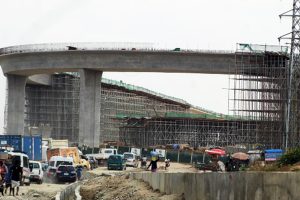
He revealed plans for a Kumasi Eastern Quadrant Bypass, starting from Ejisu, detouring behind Anita Hotel, and connecting to the Mampong Road.
He also mentioned completion of Sunyani Ring Road, Tamale’s third ring road, and extending access in previously ignored regions like Oti.
“When I got to Oti Region, there was no active road project. Is that fair? Reset means we are taking roads to every part of the country,” he said.
TTC and Sinohydro Saga
Roads minister Kwame Agbodza also explained why the Tema Community Three (TTC) project was not included under the Big Push, linking it to a failed barter agreement from the NPP era involving Chinese firm Sinohydro.
“You said people would take our bauxite and give us roads. It turned out to be untrue. You converted it into a loan. And when we couldn’t pay Sinohydro left,” Kwame Agbodza recounted.
He added that they were now negotiating for the firm to return, and once that happens, TTC projects will resume but remain outside the Big Push for now.
Deprived Districts and Agricultural Growth
Kwame Agbodza concluded by revealing that over 160 districts, largely agrarian and deprived, had been identified for special attention.
“Instead of spending 70% of our budget on more interchanges, let’s support yam growers in Yendi, rice farmers and tourism zones. That’s the real economic backbone,” he emphasised.
He maintained that Big Push was not about regional favouritism, but about creating connectivity across Ghana to unlock economic potential.
However, the former roads minister maintained that with Ghana’s limited financial resources, it made more sense to prioritize ongoing projects rather than starting new ones especially when feasibility studies for new projects hadn’t even been completed.
“The President said a new six-lane expressway will start next year. But how? The Minister himself admitted they just hired a consultant for feasibility. You don’t even know the cost,” he argued.
He also questioned the fiscal credibility of announcing timelines without confirmed figures or studies.
But Kwame Agboza said, “This is not politics. Yes, you did your best. But the contractors didn’t listen to you. If you breach our laws, we’ll deal with you. Help me retrieve the $30 million for Savelugu to Walewale road we need that money.”
He also warned contractors delivering shoddy work or wasting state resources: investigations are already underway, and the government would not spare anyone.
Below is what The Big Push Programme seeks to do as stated in the Mid-Year Budget Review.
Mr. Speaker, as part of the 2025 Budget we announced the commencement of the Big Push Programme, a flagship initiative of President John Mahama for massive infrastructure development.
Since then, the President has dedicated all Big Push budgetary allocations over the next two years to improve road infrastructure. Mr. Speaker may recall Parliament approved that all oil revenues and mineral royalties accrued to the Budget be dedicated to the Big Push.
As a result, the amount of GH¢13.8 billion which was allocated in the 2025 Budget to the Big Push Programme will be used for road infrastructure. Mr. Speaker, the Minister for Roads and Highways has spent the first six months of his time in office touring the whole country to assess, first hand, the state of roads in our country.
The Ministry of Roads and Highways has undertaken studies and prepared comprehensive engineering interventions and cost estimates for road projects under the Big Push Programme.
The Ministry of Finance has since issued commitment authorizations for the following road infrastructure projects under the Big Push Programme:
- Construction of a new bridge on the Oti River at Dambai;
- Rehabilitation of Wa – Han Road;
iii. Upgrading of Tumu – Hamile Road;
- Upgrading of Tumu – Han – Lawra Road;
- Reconstruction of Navrongo – Tumu Road;
- Rehabilitation of Techiman – Nkonsia – Wenchi Road;
vii. Rehabilitation of Wenchi- Sawla Road;
viii. Construction of Sunyani Outer Ring Road;
- Construction Of Kumasi Outer Ring Road (Eastern Quadrant);
- Rehabilitation of Gbintri – Nakpanduri Road;
- Rehabilitation of Dodo Pepesu – Nkwanta Road;
xii. Rehabilitation of Atimpoku – Asikuma Junction Road;
xiii. Rehabilitation of Asikuma Junction – Anyirawasi Road;
xiv. Reconstruction of Anyirawasi – HoTritrinu Road;
- Upgrading of Akosombo-Gyakiti-Kudikope Road;
xvi. Upgrading of Asikuma to AnumBoso-Kpalime Road;
xvii. Upgrading of Adomi Bridge to Akwamufie Road;
xviii. Rehabilitation of Ho – Kpetoe Road;
xix. Rehabilitation of Kpetoe-Afiadenyigba Road;
- Rehabilitation of Afiadenyigba – Penyi Road;
xxi. Rehabilitation of Penyi – Aflao Road;
xxii. Dualization of Winneba – Mankessim Road;
xxiii. Dualization Of Cape Coast- Takoradi Road;
xxiv. Rehabilitation of Mankessim-Ajumako-BremanAsikuma-AgonaSwedru
Road;
xxv. Rehabilitation of Tema – Aflao Road (Section 1);
xxvi. Reconstruction of Dodowa – Afienya-Dawhenya Road;
xxvii. Upgrading OfOyibi-Appolonia-Afienya Road;
xxviii. Construction of Enchi – Elubo Road;
xxix. Construction of Dadieso – Akontombra Road;
xxx. Upgrading of Adwofua – Oseikojokrom Road;
xxxi. Upgrading of Enchi – Kudjouru – Pekyi Road; and
xxxii. Upgrading of Bediako Junction – Camp 15 – SefwiAdabokrom Road.
Rt. Hon. Speaker, as part of the Big Push Programme, we have also selected thefollowing abandoned road projects, for which no dedicated funding was allocated by the previous administration:
- Rehabilitation and Upgrading of Kasoa – Winneba Road;
- Rehabilitation of Ofankor – Nsawam Road (Dual Carriageway);
iii. Dualization of Takoradi – Agona Junction Road;
- Construction of Suame Interchange and Local Roads;
- Construction of National Route N18: Wa – Han Road;
- Upgrading of Tumu – Chuchuliga – Navrongo including construction of
36m span reinforced concrete bridge over Kanyibie River and 24m span
reinforced concrete bridge over Bechelihu river;
vii. Reconstruction of Navrongo – Chuchuliga – Sandema Road;
viii. Rehabilitation of Tepa (Mabang) – Goaso Road;
- Rehabilitation of Hohoe – Jasikan Road;
- Upgrading of Nkwanta – OtiDamanko Road;
- Reconstruction of Have – Hohoe Road;
xii. Dualization of Adenta – Dodowa Road; and
xiii. Reconstruction of Jinijini – Sampa Road.
Mr. Speaker, in line with Section 33 of the Public Financial Management Act and as part of this Mid-Year Fiscal Policy Review of the 2025 Budget Statement and Economic Policy, I am seeking approval for these multi-year commitments.
Mr. Speaker, government has also initiated comprehensive feasibility studies for four (4) projects which are currently at various stages of preparation, ensuring detailed assessments of their technical, economic and environmental viability.
The projects are:
- Accra – Kumasi Expressway on a completely new alignment;
- Accra Outer Ring Road;
iii. Kumasi Outer Ring Road; and
- Adawso – EkyeAmanfrom Bridge to connect the Afram Plains area.

